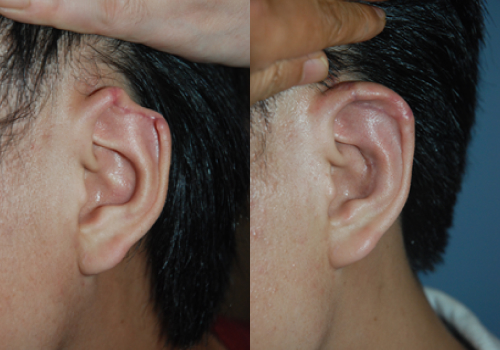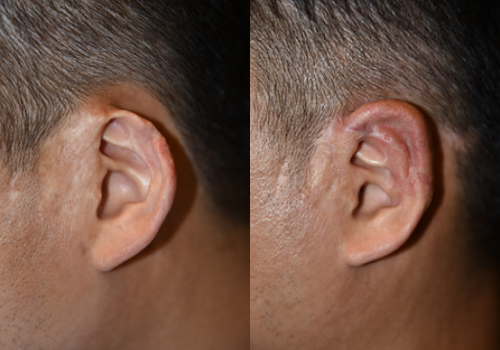Abnormal Shape
ear surgery centerTraumatic ear defect
Traumatic ear defect
Since ears damaged by various accidents interfere with social life, they should be restored as close to normal, if possible. The surgical method varies depending on the location of the damage, deformation, and degree of loss. Most importantly, when defects occur due to traumatic amputation, human bite (bitten by a person), burns, etc., you should not attempt to treat it using surrounding skin tissue or fascia, and better results can be obtained through primary suturing and subsequent reconstruction, even if the tissue is sacrificed a little more. If the severity of the defect is mild (deformation or defect of less than 1/4 of the ear), the cartilage part is restored with the ipsilateral or contralateral ear cartilage, and the skin is restored using the skin or fascia around the ear, but if the degree is severe (deformation or defect of more than 1/4 of the ear), it is necessary to make a cartilage frame in a similar way to microtia and restore the skin with fascia, skin around the ear, or skin graft. It is important to accurately determine the degree of damage and restore the skeleton and skin of the deficient (deformed) area as close to normal as possible.



